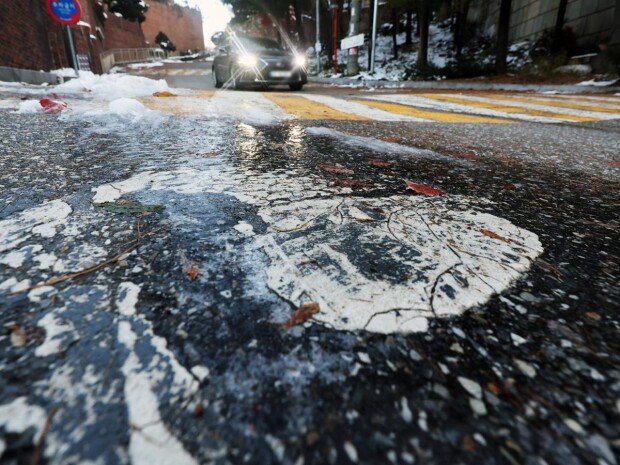Black ice more common around 0°C than during severe cold
Black ice more common around 0°C than during severe cold
Posted January. 15, 2025 08:20,
Updated January. 15, 2025 08:20

Black ice on roads, often called "black ice," is commonly associated with cold spells. However, it can also form in milder conditions, around 0 degrees Celsius.
Black ice forms a thin, transparent layer on roads, making the black asphalt visible—hence its name. Its near-invisibility to drivers has earned it the nickname "road assassin."
Black ice forms when water from rain, snow, or melting snow seeps into asphalt cracks and freezes as surface temperatures drop below zero. It also occurs when fog freezes on road surfaces. Black ice is most common on bridges, tunnel entrances, exits, and shaded areas where road temperatures are typically lower.
According to the Korea Meteorological Administration, Seoul's temperature fluctuated from -5.6°C on Monday to 0.7°C on Tuesday, with a 6.3°C rise contributing to widespread black ice formation in the metropolitan area. “Black ice appears transparent, like food coated in sugar water, and it’s easy to underestimate its danger compared to snowy roads,” a Korea Meteorological Administration official advised. “Extra caution is crucial to avoid safety accidents.”
??? ?? chan2@donga.com







